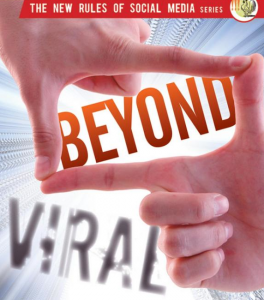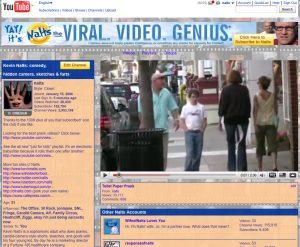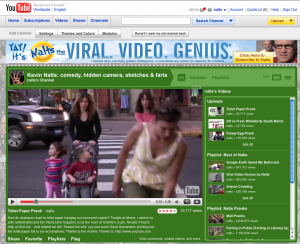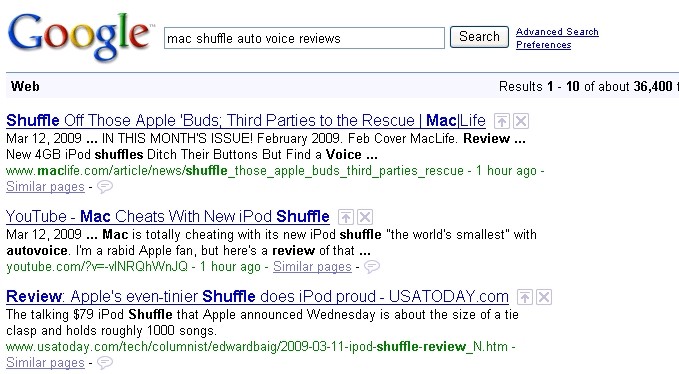Fresh new data about online-video views, sharing and viewers! The source is YouTube, Next New Networks and Frank N. Magid & Associates (see press release and blog), and the data was collected between May 18 and June 4, 2010. While it’s not super fresh, it’s filling a void in the past year.
Two important take-aways: First, the audience is digging its online video. More than half of those surveyed (people who have watched Web original videos) deem them to be just as, if not more, entertaining than what they view on traditional television. Did you hear that? As good as TV. And 25% find it more entertaining than traditional television. That explains why these folks are 2.5 times more likely to be “engaged.” They’re clearly watching more sophisticated content than mine.
Now before we get too excited, clearly YouTube and Next New Networks aren’t exactly objective here. Both have something to gain from convincing advertisers that this web-video fad, like the Fushigi and pet rock, is here to stay. However there are two things that make me inclined to trust the data: First, hopefully someone with a website as boring as Frank Magid’s is keeping an eye on the methodology and sample. Secondly, YouTube/Google almost NEVER shares data. So that’s a big deal.
I’m never sure what to do with excerpts like “four out of ten share videos,” because I’m more interested in how often they share. For instance, I’d be among the percentage of people who has seen my dentist in the past year (hey look I made him a website: drjeffreymercando.com). But that overlooks the reality that I’d not seen him for several years prior to my visit last month. If you surveyed me if I floss, I’d say yes. But how often?
The second interesting fact about this collective study is that online-video viewers are indeed young: mostly 18-34. There was no shame in the way YouTube/NNN and Magid depicted the demographic of online-video viewers. Rather than trying to dance around one of the leading concerns advertisers have about any new medium (that their target isn’t there)… YouTube & Next New Networks tell it like it is:
“According to recent Nielsen reports, the average age of television viewers is over the age of 50. However, this research revealed that 18-34 year old Web original viewers constituted 65% of the National sample, 73% of the YouTube sample, and 90% of Next New Networks’ sample. Not only does the coveted 18-34 demographic spend many hours viewing video online on a regular basis, but the research shows that this time spent with online video and Web original content leads to less time with TV. Web original video viewers spend 13% less time with TV than non-viewers.”

So these fellas are kinda saying, “yeah we’re not television… but our audience is more engaged, and it’s that coveted 18-34 year olds who spend a lot of money.” And then it tosses in the fact that for these peeps, television isn’t growing. This demo, according to the research, is 13% less likely to watch the boob tube.
I present this cautiously. I recall the advertiser trepidation with the Internet itself, based on the assumption that online surfers were all college kids, and we (almost overnight) saw that change. Now, of course, online-use kinda mirrors the general population (at least in the U.S.)… that’s where this is heading. Eventually, like it’s true for the web, any target can be found via online video, with varying degrees of precision and scale. So I don’t want to let brands targeting different audiences, “off the hook.” Media buyers hold demographic data like Irish people hold grudges, and we don’t want to see advertisers write online-video off as the medium for just for Vodka, Kaplan, and Sandals Resorts. I think we need to keep a close eye on how online-video viewership of moms and boomers grow in the next months and years.
That being said, it skews young right now. Let’s face it and embrace it. Anyone up for cramming for the GMATS over a martini in Jamaica?
“The findings are an incredible point of validation for Web original programming as a key source of entertainment and viewers find it to be on par with television programming,” said Rick Silvestrini, Product Marketing Manager at YouTube, while holding in a 27-year-old fart.
Speaking of Silvestrini, below is my video remix of him, inspired by a comment I noticed about his original video where someone swears they heard a fart. Is this tasteless? Yes. Biting the hand that feeds you? Perhpaps. But could you expect me to restrain myself? No way.
No offense Rick. I’m the same guy that stuck Jordan Hoffner’s sound bite about advertisers fearing cats on skateboards into a “best of cats on skateboards” remix. And Chad Hurley still thinks of the anchovy pizza video when he sees me. It’s love… it’s just tough love.









 Goal: When the new Mac shuffle came out yesterday, I thought it was time for a test. Our mission: could little old ME rank higher on Google for basic terms related to the new Mac mini iPod Nano shuffle thing with autovoice? Could I possibly outrank Mac, CNet and Mac blogs on search terms people might use to find out of the device sucked or not? Remember Uncle Nalts says Google indexes well-viewed YouTube videos rather high. Certainly easier than buying Google ads perpetually or optimizing a website for 50K.
Goal: When the new Mac shuffle came out yesterday, I thought it was time for a test. Our mission: could little old ME rank higher on Google for basic terms related to the new Mac mini iPod Nano shuffle thing with autovoice? Could I possibly outrank Mac, CNet and Mac blogs on search terms people might use to find out of the device sucked or not? Remember Uncle Nalts says Google indexes well-viewed YouTube videos rather high. Certainly easier than buying Google ads perpetually or optimizing a website for 50K.